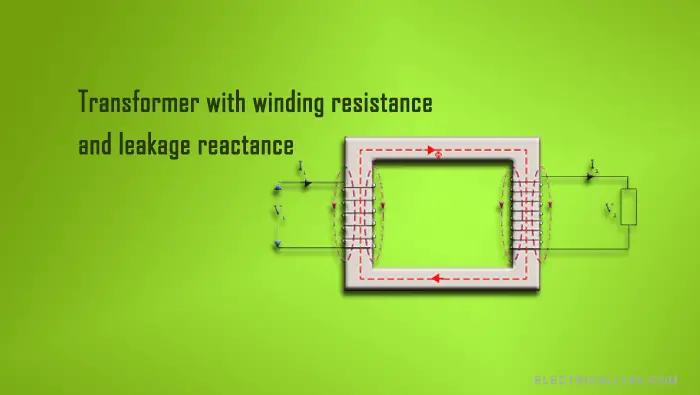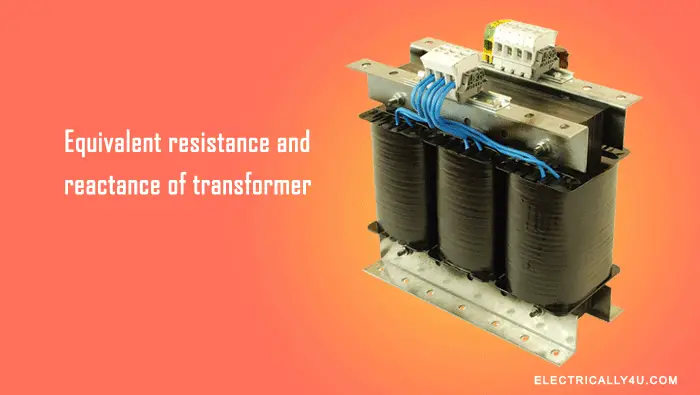Types of Armature winding | Drum winding – Lap winding – Wave winding

Armature winding is an arrangement of conductors in order to develop the desired emf by relative motion in the magnetic field. Based on the arrangement of conductors, there are several types of armature winding like drum winding, lap winding, wave winding, frog-leg winding, etc.
Before getting into the detailed study, learn the terms used in the armature winding.
Types of Armature Winding
Open coil and closed coil winding
Open coil winding is that winding which does not close on itself. The circuit will be closed until external connections are made to the load. DC machines do not employ this type of winding.
On the other hand, a closed coil winding will have a closed path. No external connection is needed to close the circuit. If we start to trace the winding, we can reach the starting point without any external connections. DC machines employ this type of winding. It is of two types.
- Gramme-ring winding
- Drum winding.
In gramme-ring winding, the wire is wound around the outer and inner surfaces alternately on a cylindrical or ring-shaped core. It is an old type of armature winding. Among these two winding, drum winding is more efficient and so gramme-ring windings are replaced by drum winding.
Drum winding
They have slots on the drum-shaped armature surface, to house the conductors. The conductors are connected to one another by the front and back connectors.
Drum winding is preferred because of its advantage: Since the coil sides are placed in slots, except the end connectors, all the coppers will cut the flux to induce an emf. The cost can be reduced by pre-forming and insulating the conductor before placing it on the armature.
Drum winding may be either single layer winding or double layer winding.
Single layer and Double layer winding
In single layer winding, each slot has one conductor or one coil side, as shown in the below figure.
The two-layer winding has two conductors or two coil sides per slot arranged in two layers. The conductors are arranged in such a way that, one side of every coil is on the upper half of one slot. Another side of the same coil is placed on the lower half of another slot.
Such type of armature winding is employed in medium-sized machines. The following figure depicts the single layer and the two-layered winding.

For machines with a larger rating, several coil sides are placed in single slots on two layers. The numbering and arrangement of the coil sides are done in a progressively clockwise manner. The coil sides placed in the upper half are numbered as 1, 3, 5, etc. while those on the lower half are numbered as 2, 4, 6, etc. Such placement of coil sides will reduce the number of slots.
Advantage of double layer winding with fewer slots
- Armature core teeth become stronger, providing less damage to the laminations and coils.
- Fewer slots reduce the number of coils to be wounded, which makes the cost of manufacture to be low.
- For reduced slots, the number of commutation segments increases. This decreases the number of coils connected to the adjacent segment. It results in less sparking in the commutator, which improves the commutation.

There are two types of drum type armature winding: Lap winding and wave winding.
Do you know something? The alternator also has these two types of armature winding. Learn how it is wounded in the alternator.
Both the windings have a major difference by the way they are constructed. In lap winding, the coil ends are connected to the adjacent commutator segments. Whereas in wave winding, coil ends are connected to the segments separated by approximately twice the distance between adjacent poles.
Lap winding
In lap winding, the finishing end of one coil is connected to a commutator segment. The starting of an adjacent coil situated under the same pole is also connected to the same commutator segment. Since there is an overlapping of successive coils, it is known as lap winding. It is shown in the following figure.

Lap winding is again classified into
- Simplex lap winding
- Multiplex Lap winding(duplex, triplex, etc..)
Simplex lap winding is a winding in which the number of parallel paths will be same as that of the poles.
A duplex winding consists of two similar simplex winding placed in the armature slots and connected to the alternate commutator segments. Hence the number of parallel paths is twice the number of poles. In a similar way, the triplex winding is also connected. They have a number of parallel paths thrice the number of poles.
Lap winding is also called as multiple or parallel winding and is used for applications with high current output.
Parameters to be considered for designing lap winding
- The coil pitch or back pitch must be approximately equal to the pole pitch.

- Back pitch should be either lesser than or greater than front pitch by 2m, where m is the multiplicity of the winding.

where m = 1, 2, 3 respectively for simplex, duplex, triplex lap winding.
When the back pitch is greater than the front pitch, the winding progresses from left to right and is known as progressive Lap winding. When the front pitch is greater than the back pitch, the winding progresses from right to left. Such winding is known as retrogressive Lap winding.

3. Both back pitch and front pitch must be odd integers.
4. Average pitch is given by,

5. The resultant pitch is always even. Yr = 2m.
6. Commutator pitch, Yc = m.
7. Number of parallel path in the Lap winding = mP, where P is the number of poles.
Wave winding
In wave winding, the coil side is not connected back but progresses forward to another coil side. Each coil side pass through every N pole and S pole till it returns to the point where it was started. The winding is arranged, such that they progress in the same direction.

Since it looks like a wave-shaped structure, it is called wave winding. It is also known as series winding, as it forms a series of coils.
The winding after wounded one round of the armature, if it falls in a slot to the right of its starting point, then it is said to be progressive wave winding. If it falls in a slot to the left of its starting point, it is retrogressive wave winding.

Parameters to be considered for designing wave winding
- Both the front pitch and back pitch must be odd integers.
- Both Back pitch and front pitch must be nearly equal to the pole pitch and maybe equal or differ by ±2.
- Commutator pitch, Yc = Average Pitch Yav

For a multiplex wave winding, the relation between back pitch and front pitch is the same as lap winding.


Frog Leg winding
Wave windings are less complicated, easier to install and service and low cost compared to lap winding. But for the current rating over 500 A, more than two parallel paths have to be used. In that case, wave winding is not suitable.
Frog leg winding is one of the important types of armature winding. It incorporates the advantages of both lap and wave winding. Frog leg winding has multiplex wave winding in the same slots with a simplex or multiplex lap winding. This will give P parallel paths for a frog leg winding, which makes it suitable for high current and voltage ratings.






